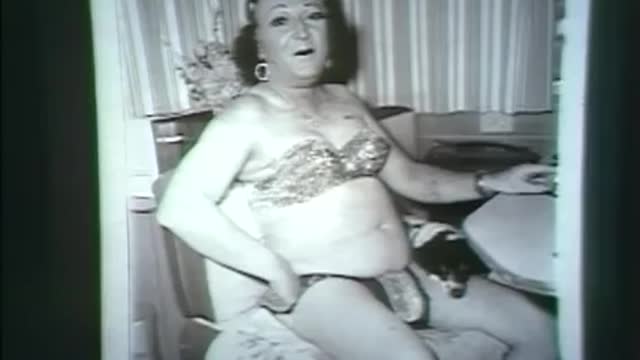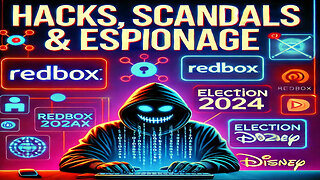Premium Only Content

1972 Diane Arbus Documentary Interviews Those Who Knew the American Photographer Best
Photographer Diane (pronounced Dee-Ann) Arbus received much new press a few years ago with the release of the highly fictionalized and misguided biopic Fur, starring Nicole Kidman. The movie did not do well, and its critical failure may have eclipsed some re-evaluation of her work in favor of prurient speculation about the woman behind it. Another opportunity arrived last year on the 40th anniversary of Arbus’s death by suicide at age 48, and with the publication of William Todd Schultz’s Arbus biography An Emergency in Slow Motion. But long before all of this renewed interest in Arbus, there was the short documentary Masters of Photography: Diane Arbus (above). Produced in 1972, one year after Arbus’s death, the film is built on interviews with the people who knew her best: her daughter Doon, her teacher at the New School, Lisette Model, colleague Marvin Israel, and the director of photography at the time for the Museum of Modern Art, John Szarkowski. That same year, Arbus became the first American photographer to be featured, posthumously, at the Venice Biennale.
Born Diane Nemerov to wealthy parents in New York City, Arbus once confided to Studs Terkel that she “grew up feeling immune and exempt from circumstance.” “One of the things I suffered from,” said Arbus, “was that I never felt adversity. I was confirmed in a sense of unreality.” Arbus gained a reputation for pursuing the seemingly “unreal” in the midst of reality; her photographic subjects were circus “freaks,” social outsiders, eccentric performers, the physically disabled (whom she called “aristocrats”) and just ordinary, not very attractive, people.
Sometimes her subjects seem unreal because their warts-and-all ordinariness contrasts so starkly with the glossy denizens of slick, full-color magazines–those who can seem more real to us than we do to ourselves. She may have been driven to the margins because of her hatred for the fashion photography she and her husband, Allan Arbus, did for Vogue, Seventeen, and Glamour.
Arbus had a unique ability to coax powerful portraits from her subjects, most of whom stare directly at her camera, and the viewer, and do not shrink from confrontation. As with most artists who commit suicide, a “cult of Arbus” has sprung up to defend her from critical scrutiny, but there are legitimate questions about whether her portraiture humanizes or exploits her subjects. Susan Sontag believed the latter and described her work as “based on distance, on privilege.” Reacting to her portrait of him, Norman Mailer found her work dangerous enough to quip, “Giving a camera to Diane Arbus is like giving a hand grenade to a baby.” But Arbus was not naïve: she describes herself in an audio interview above as “kind of two-faced, very ingratiating,” and “a little too nice” to her subjects while she captures their flaws. I’ll admit, it’s a little hard to make up one’s mind about her motivations, but the photographs are always deeply compelling.
-
 52:14
52:14
Talk Nerdy 2 Us
19 hours agoHacks, Scandals, and Espionage: Inside Today’s Most Shocking Cyber Heists!
65.9K10 -
 1:58:45
1:58:45
I_Came_With_Fire_Podcast
17 hours agoLive Fire (No Exercise)
54.9K6 -
 1:33:41
1:33:41
Kim Iversen
15 hours agoMichael Flynn, Steve Bannon and Trump: Sean Stone Reveals The Deep State's Plot To Take Down An American President
124K151 -
 58:39
58:39
Flyover Conservatives
1 day agoPorn & LGBTQ+ Agendas in Schools: What You Can Do - John Amanchukwu; 7 Key Indicators You Can't Ignore - Dr. Kirk Elliott | FOC Show
98.1K13 -
 5:40:43
5:40:43
Drew Hernandez
19 hours agoTRUMP RALLY WI, CNN LIES & MARK CUBAN NUKES KAMALA
104K11 -
 1:53:28
1:53:28
Glenn Greenwald
15 hours agoMedia Fabricates Trump’s Call For Liz Cheney’s Execution; Slate Writer Demands Usha Leave JD; Darren Beattie On 2024 & Pakistan | SYSTEM UPDATE #361
144K102 -
 1:12:53
1:12:53
Havoc
16 hours agoListener's Lounge - The Chat Takeover
82.9K2 -
 5:56:05
5:56:05
Tundra Gaming Live
17 hours ago $14.96 earnedOne More Day Of Zombies Then Back To Warthunder
77.8K1 -
 6:43:15
6:43:15
Right Side Broadcasting Network
2 days agoLIVE: President Trump Delivers Remarks at a Rally in Warren, MI - 11/1/24
323K30 -
 36:53
36:53
Stephen Gardner
14 hours ago🔥Col. Douglas Macgregor: Kamala's inexperience is DANGEROUS | Israel & Ukraine NEED Trump!
76.7K125